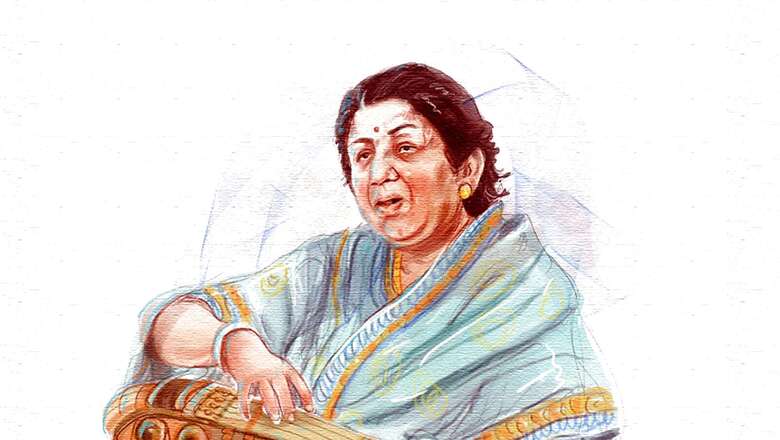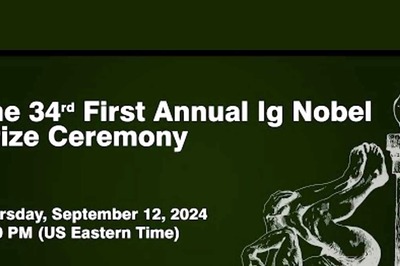
views
She was the voice of India, its permanent soundtrack on long, lonely days; under moonlit nights on the terrace; on drives through dark and dank streets; on kitchen radios in solitary work-filled afternoons; and by the light of the laptop on deadline-challenged evenings. She sang to ease our pain, to fill us with joy, and sometimes to give us courage.
The very heart of India throbs in your voice, legendary music director Naushad wrote to her once. He couldn’t have put it better.
For three generations of India, Lata Mangeshkar was what music scholar Pavitra Sundar has called the ideal voice of Indian femininity, forever girlish and forever pure, in marked contrast to the husky-voiced women such as Noorjehan and Shamshad Begum who had sung before her. Her emergence coincided with India’s Independence and the golden years of Indian cinema, with her voice becoming emblematic of the fresh-faced Bharatiya Naari, and Asha, her sister, becoming identified with the more Westernised woman, usually swinging to the beats of RD Burman’s music.
The perception of innocence was reinforced in Lata’s private life. She never married, being forever in the public eye being wedded to music. She was equally devoted to her family, her story made familiar by its poignancy. A 13-year-old has to sing for a living after her theatre and film producer father, also her guru, dies of heart disease. A Marathi film director Master Vinayak (later known as actress Nanda’s father) takes the family under his wing. Lata moves to Mumbai at the age of 16, starts taking lessons in Hindustani classical music from Ustad Aman Ali Khan, plays minor roles in Master Vinayak’s first Hindi-language movie, Badi Maa (1945), where she also sings a bhajan. After Vinayak’s death, she is helped by Ghulam Haider who gives her her first major break with the song ‘dil mera toda, mujhe kahin ka na chhora’ in Majboor (1948). Then there is no stopping her.
Her consistency and durability is astounding. If she was the haunting voice of Madhubala in Mahal (1949) singing ‘aayega aanewala’, her breakout song, she was also the song of emancipation for Waheeda Rehman in ‘Aaj phir jeene ki tamanna hai’ in Guide (1965), if she embodied the sensual longing of Rekha in ‘Yeh kahan aa gaye hum’ (Silsila, 1981) she was also playfulness personified in ‘Didi, tere dewar diwana’ in Hum Aapke Hain Koun..! (1994). Playback singing in India has never been about mere dubbing, it has been about feeling and enacting the emotion. An interesting question to ask, writes Nasreen Munni Kabir in Lata Mangeshkar: In Her Own Voice (Niyogi Books, 2009), is Lataji singing for the actress or is the actress’s performance determined by her?
ALSO READ: Lata Mangeshkar (1929-2022): When Pandit Jawaharlal Nehru Heard ‘Aye Mere Watan ke Logo’ For The 1st Time
Her sister Asha Bhosle’s voice was considered more sensuous but listen to ‘Aaja piya tohe pyar doon’, where Asha Parekh is romancing a Rajesh Khanna in Baharon ke Sapne (1967), or catch Nanda dancing by herself on a houseboat in a slinky white nightgown in ‘Yeh sama, sama hai yeh pyaar ka’ in Jab Jab Phool Khile (1965). She could move us to tears singing with Kishore Kumar in ‘Tere mere milan ki yeh raina’ in Abhimaan (1973) or make us break down singing with Roopkumar Rathod in ‘Tere liye’ in Veer-Zaara (2004). She sang with the children of composers she had worked with, she sang bhajans and ghazals, she sang in Marathi and Tamil, she sang at sellout concerts abroad and at national events at home. She was a national treasure, Bollywood’s Didi much before the political Didi emerged on the scene, India’s Nightingale, the Melody Queen.
It is difficult to imagine the working conditions of her early career, the studios with no air conditioning, shifts that would sometimes start at 9 in the morning and end the next morning, 20 or 30 takes for a song at one time on an empty stomach, long rehearsals, and no credit initially. She sang her heart out, no matter what the world around her was like.
Lata is the echo in your ears from years of listening, from weekly Chitrahaars to holiday Antaksharis to weekday commutes. ‘Tu jahan jahan chalega, mera saaya saath hoga’ (Wherever you go, my shadow will follow), she sang for Sadhana in Mera Saaya (1966). Honoured with many awards, most importantly the Bharat Ratna, feted by millions, beloved by even more, she is the shadow that always shows us the light. You must excel your guru, her father once told her.
She did.
The author is a senior journalist and former editor of India Today magazine. The views expressed in this article are those of the author and do not represent the stand of this publication.
Read all the Latest Opinions here

















Comments
0 comment